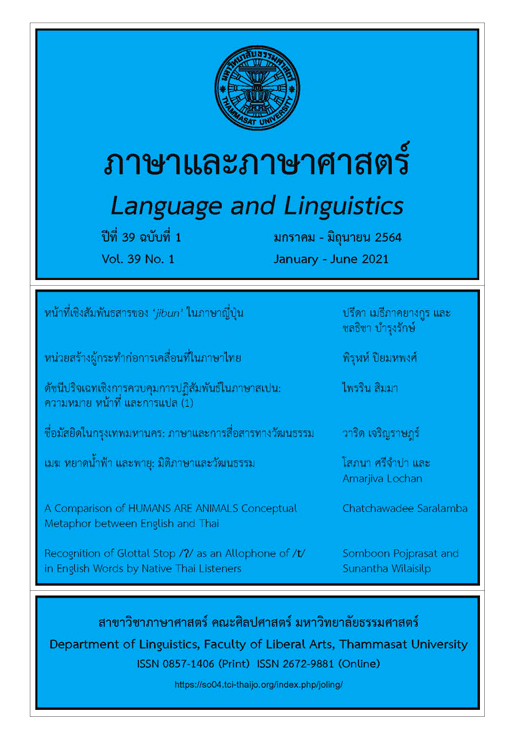A Comparison of HUMANS ARE ANIMALS Conceptual Metaphor between English and Thai
Main Article Content
Abstract
This study explores aspects of the role of metaphors in our conceptualisation of animals and how this relates to our conceptualisation of humans. Conceptual metaphor theory (Lakoff & Johnson, 1980) has been extremely influential in cognitive linguistics and other fields, and has cross-cultural implications. Of particular interest to this study are the conceptual metaphors HUMANS ARE ANIMALS, and HUMAN BEHAVIOUR IS ANIMAL BEHAVIOUR (Kövecses, 2002). Kövecses (2005) also put forward that although these conceptual metaphors may be universal cross-culturally meaning that animal metaphors may be used to describe HUMANS in all cultures – their expression in terms of the source domains used (e.g. the particular animal) may vary as a function of the linguistic and cultural background in question.
Animal metaphors are used ubiquitously across languages to refer to human behaviour. Cowards are represented as chickens, lions denote the brave, and crowd followers are sheep and, although connotations and labels may vary quite significantly, the general conceptual metaphor of HUMANS ARE ANIMALS exists across cultures and is universal because of the similarity of human nature.
The results made evident that metaphors are not independent of socio-cultural settings, but metaphor, and thus cognition, is deeply related to our understanding of society and culture.
Article Details
บทความทุกบทความเป็นลิขสิทธิ์ของภาษาและภาษาศาสตร์
References
British National Corpus. (2017). http://www.natcorp.ox.ac.uk/
Gibbs, R. W. (1994). The poetics of mind-figurative thought, language, and understanding. Cambridge University Press.
Kövecses, Z. (2002). Metaphor: A practical introduction. Oxford University Press.
Kövecses, Z. (2005). Metaphor in culture. Cambridge University Press.
Lakoff, G. (1993). The contemporary theory of metaphor. In A. Ortony (Ed.), Metaphor and thought (pp. 202-251). Cambridge University Press.
Lakoff, G., & Johnson, M. (1980). Metaphors we live by. University of Chicago Press.
López, I. (2009). Of women, bitches, chickens and vixens: Animal metaphors for women in English and Spanish. Cultura, Lenguaje y Representación/ Culture, Language and Representation, 7(7), 77-100.
Thai National Corpus. (2550). http://www.arts.chula.ac.th/~ling/tnc3/


